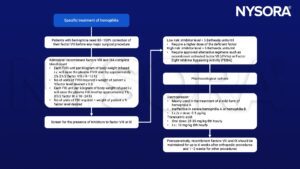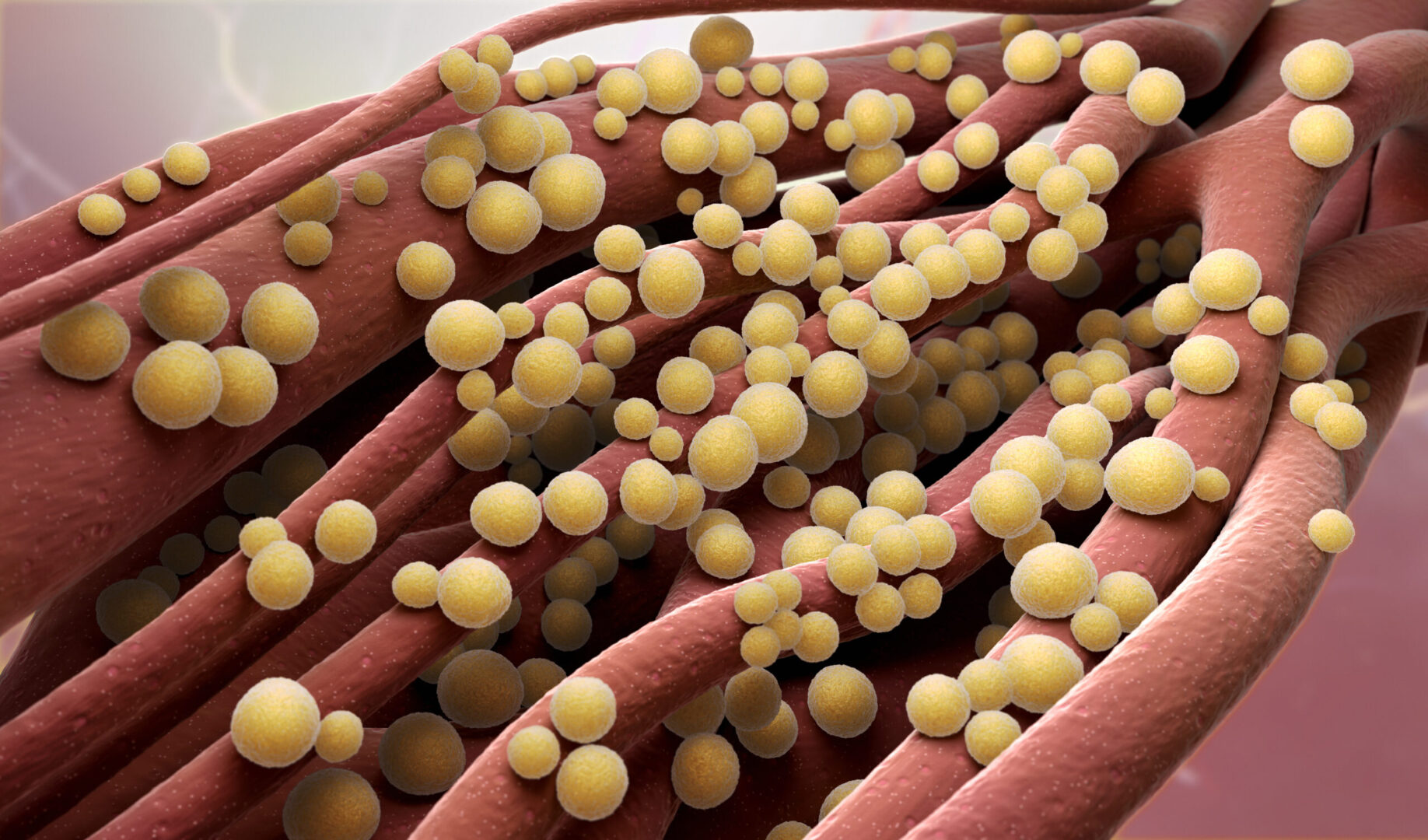Learning objectives
- Definition and types of hemophilia
- Management of hemophilia
Definition and mechanisms
- Inherited bleeding disorder in which the blood does not clot properly
- Resulting in a longer bleeding time: ↑ PTT, normal INR
- Spontaneous bleeding as well as bleeding following injuries or surgery
- Severity depends on the amount of factor in the blood
- Two types of hemophilia:
- Hemophilia A (Classic Hemophilia): caused by a lack or decrease of clotting factor VIII
- Hemophilia B (Christmas Disease): caused by a lack or decrease of clotting factor IX
- Hemophilia is 4 times as common as hemophilia B
- A normal value of coagulation factor is 0.5-1.5 IU/ml or 50-150%
| Hemophilia | Mild | Moderate | Severe |
|---|---|---|---|
| % activity of factors Factor levels (IU/ml) | 5-40 0.05-0.40 | 1-5 0.01-0.05 | <1 <0.01 |
Signs and symptoms
- Unexplained and excessive bleeding from cuts or injuries, or after surgery or dental work
- Many large or deep bruises
- Unusual bleeding after vaccinations
- Pain, swelling, or tightness in the joints
- Blood in your urine or stool
- Nosebleeds without a known cause
- Unexplained irritability in infants
Causes
- Congenital:
- Caused by an X-linked genetic mutation
- Occurs in 1/5000 male births
- Acquired hemophilia:
- Pregnancy
- Autoimmune disorders
- Cancer
- Multiple sclerosis
- Drug reactions
Complications
- Deep internal bleeding
- Bleeding into the throat or neck
- Damage to joints
- Infection: hepatitis C
- Adverse reaction to clotting factor treatment
Management

Specific treatment

Suggested reading
Shah UJ, Madan Narayanan M, J Graham Smith JH. Anaesthetic considerations in patients with inherited disorders of coagulation, Continuing Education in Anaesthesia Critical Care & Pain, Volume 15, Issue 1, February 2015, Pages 26–31.
We would love to hear from you. If you should detect any errors, email us customerservice@nysora.com







